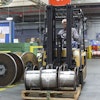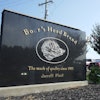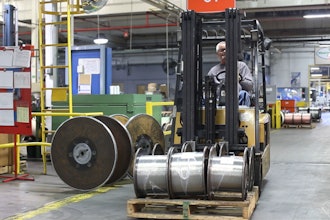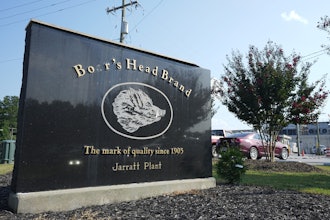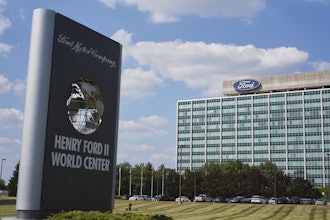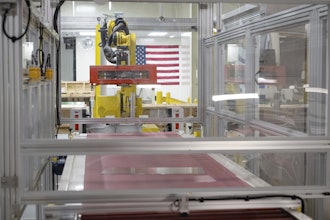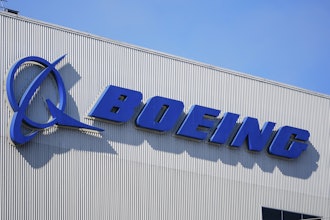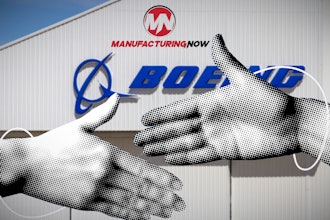By MICHAEL COLLINS, Author, Saving American Manufacturing
 A recent study by Deloitte LLP and the Manufacturing Institute states: “For years, manufacturers have reported a significant gap between the talent they need and what they can actually find. [In fact] 67 percent of manufacturers reported that moderate to severe shortages of available, qualified workers exist, and 56 percent anticipate that these shortages will only grow worse in the next three to five years.” [1] The workers hardest to find are machinists, tool makers, mold makers, and other craft workers and technicians.
A recent study by Deloitte LLP and the Manufacturing Institute states: “For years, manufacturers have reported a significant gap between the talent they need and what they can actually find. [In fact] 67 percent of manufacturers reported that moderate to severe shortages of available, qualified workers exist, and 56 percent anticipate that these shortages will only grow worse in the next three to five years.” [1] The workers hardest to find are machinists, tool makers, mold makers, and other craft workers and technicians.
This is really old news, and we have been talking about the skilled labor problem for years. This is the fifth skills gap survey published by these organizations since 1990, and all show similar results, but very few people who talk about this problem ever say exactly what skills are needed. The reason this is hard to define is that manufacturing covers a huge number of industries, industrial products and types of manufacturing.
Six million people have been laid off from manufacturing jobs since 2001, and still 5 percent of all manufacturing jobs (60,000 jobs) remain unfilled. The manufacturers don’t want to hire back the low-skilled people; they want multi-skilled people who can do a wide variety of jobs. Due to automation and the changing nature of manufacturing work, I will make the case that the skills we need are very similar to the skills one receives in a long-term or apprentice-style program.
Penn United Technologies is a mid-size manufacturer located in western PA that specializes in precision metal manufacturing. Jim Ferguson, director of training, explains that, in 1997, the company was doing most of its training through local vocational technology centers, but the training did not cover all of the skills needed for its type of manufacturing. The company decided that it would invest in its own training and designed the Learning Institute for the Growth of High Technology (LIGHT).
The institute is a 17,000-square-foot manufacturing training center located on the main campus of Penn United Technologies. There are three classrooms and four labs inside, equipped with the most up-to-date manufacturing machinery and state-of-the-art equipment, so it can provide customized manufacturing training for both external customers and internal employees.
LIGHT’s main mission is to assess, design and develop manufacturing training programs to meet the needs of customers and employees. The institute offers short-term training, long-term apprentice programs, tuition reimbursement for college courses and customized training.
The short-term training is a roster of 25 courses, and a growing selection of metalworking seminars and workshops. This training covers everything from 5-S and introduction to machining to CNC programming and manual machining.
The long-term training for employees includes four apprenticeship programs approved by the Pennsylvania Bureau of Apprenticeship Training (BAT), as well as three inter-company programs.
Bureau of Apprenticeship Training Approved
- Toolmaker – five years.
- Precision machinist – four years.
- Press technician – three years.
- Quality assurance technician – three years.
Internal Apprenticeship Programs
- Plating technician – three years.
- Carbide finish grinder – four years.
- Carbide preformer – three years.
The employee training also includes tuition reimbursement to foster the professional development of its employees through the successful completion of studies in higher education, such as accounting, engineering and business management, and the pursuit of two- and four-year degrees.
In cases in which the standard program or course is not specifically what people want, the company can customize the training. Its customized manufacturing training center offers tailor-made training through a list of courses, seminars and workshops.
Penn United’s Light Training Center is a great model for all manufacturers who need the advanced skills of real journeymen. It recognizes that to produce world-class products, thitey must offer world-class training.
MAG IAS LLC
Another good example is MAG IAS, an American-based manufacturer of machine tools, with plants in Germany and the U.S. I have always been a big fan of the German training model for manufacturing because I believe it is the key to why German manufacturing is 21 percent of their GDP, while American manufacturing has slipped from 23 to 11 percent of GDP. MAG’s U.S. operations uses a system with similarities to the German training model, because the “amount of on-the-job training (OJT) and the special individual attention given to each apprentice by senior-level master technicians match the hands on German philosophy.”
Please tune into the Chemical Equipment Daily for part two of this two-part series. What’s your take? Please feel free to comment below! For more information, please visit www.mpcmgt.com.
